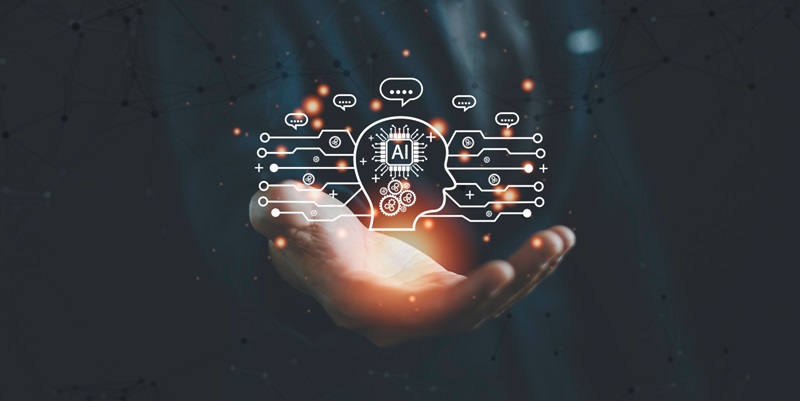The revolution in customer service is driven by the integration of data, AI, and human agents. This transformation is essential to meet the growing customer expectations and leverage technological advancements to improve the customer experience (CX). Kustomer’s significant advancements in customer service over nearly a decade highlight the necessity to move beyond traditional approaches that no longer meet evolving demands. Poor customer service results in losses amounting to a staggering $3.7 trillion globally every year, an increase of $600 billion from the previous year.
The Need for a Synergistic Approach
Kustomer’s 2024 AI and Customer Service Index reveal that only half of the customers believe AI has upgraded service in recent years, indicating substantial room for improvement by 2025. To resolve the challenges plaguing customer service today, a synergistic approach that combines data, AI, and human agents is proposed. This approach not only aims to meet customer expectations but to exceed them by transforming CX from a cost burden to a strategic growth driver.
A unified, data-driven strategy is at the heart of this proposed solution. Kustomer advocates for a proactive and personalized approach to customer service, facilitating interactions that evolve from mere problem-solving to forging strategic relationships. Statistics show that 76% of consumers expect proactive service, and 71% demand personalized interactions. Failure to meet these expectations can result in customer attrition, with 76% of customers willing to switch providers if dissatisfied.
Leveraging Data for Proactive Service
Data is critical to delivering proactive service. Traditional platforms often react by gathering information only after a service ticket is initiated. Kustomer, however, collects and analyzes data in real-time, starting from the moment a customer places an order. This real-time data collection allows businesses to anticipate customer needs, solve problems before they arise, and provide a seamless experience.
The comprehensive data includes purchase history, preferences, and behavior patterns, offering a 360-degree view of each customer and enabling informed decision-making by both AI and human agents. This holistic view empowers businesses to deliver personalized and timely service, enhancing overall customer satisfaction and loyalty.
The Role of AI in Enhancing Customer Service
AI’s role in this ecosystem is crucial. Kustomer distinguishes between simple, bolt-on AI solutions and its fully integrated AI agents. These AI agents are described using the acronym S.M.A.R.T. — Specialized, Multi-Channel, Advanced in reasoning, Responsive, and Team-oriented. Unlike rudimentary chatbots, these AI agents handle complex tasks, understand customer needs, and make real-time decisions.
These AI agents operate across multiple channels, including SMS, email, voice, and WhatsApp, ensuring a consistent customer experience. Powered by Generative AI, they provide smart, accurate responses in real time and manage intricate conversations efficiently. For example, when a customer needs to reschedule a flight, the AI can access travel history, check availability, suggest options, and when necessary, transition the interaction to a human agent seamlessly.
The Irreplaceable Role of Human Agents
Human agents play an irreplaceable role in this system by providing empathetic and personalized service. Even the most sophisticated AI cannot replicate the emotional intelligence and problem-solving capabilities that human agents offer. By managing repetitive tasks and providing data-driven insights, AI empowers human agents to deliver high-value service, fostering lasting customer relationships.
Human agents are essential for handling complex issues that require a nuanced understanding and emotional engagement. They can build rapport with customers, address their concerns empathetically, and provide tailored solutions that AI might not be able to offer. This human touch is crucial in creating a positive and memorable customer experience.
Transitioning to New-Age Pricing Models
Another critical aspect of transforming customer service is the shift from traditional to new-age pricing models. Traditional seat-based pricing models are seen as restrictive, preventing companies from scaling their operations effectively. The 2024 State of Pricing in Customer Service report indicates that a majority of companies are tied to seat-based pricing yet show a keen interest in transitioning.
A conversation-based pricing model allows companies to forecast conversations accurately, making them predictable and manageable without hidden fees or complications. This model aligns with the preferences of customer service leaders, who believe in the benefits of flexibility and predictability it offers, as opposed to the complexity of seat-based pricing. Additionally, the expectation has been that AI should be included in the overall cost, not as an expensive add-on.
The Future of Customer Service
The integration of data, AI, and human agents is revolutionizing customer service, fundamentally enhancing the customer experience (CX). This evolution is crucial to meet increasing customer expectations and capitalize on technological advancements. Kustomer’s progress in customer service over nearly a decade demonstrates the need to move past outdated methods that fail to address current requirements. Poor customer service leads to significant financial losses, totaling a staggering $3.7 trillion globally each year, which marks a $600 billion increase from the previous year. The transformation in customer service focuses on using data-driven insights and AI to provide seamless, personalized experiences while still valuing human interaction. Companies are recognizing that blending technology with the human touch yields the best results, fostering loyalty and satisfaction. Thus, embracing these innovations is not just beneficial but imperative in staying competitive and meeting the ever-evolving demands of customers in today’s fast-paced world.

